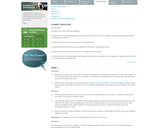
The lesson and activities teach students to recognize and explore bias and media stereotyping and be able to identify and analyze propaganda techniques in magazine and//or TV advertising.

The lesson and activities teach students to recognize and explore bias and media stereotyping and be able to identify and analyze propaganda techniques in magazine and//or TV advertising.

The day after Martin Luther King, Jr. was killed, a teacher in a small town in Iowa tried a daring classroom experiment. She decided to treat children with blue eyes as superior to children with brown eyes. FRONTLINE explores what those children learned about discrimination and how it still affects them today.
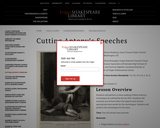
Students will perform a close reading of Mark Antony's monologue by cutting the text by 50%. Students will evaluate use of tone within the speech and choose appropriate tone words for the monologue. Students will perform the monologue for the class.
This activity could be used with other monologues as well as speeches.
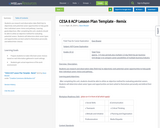
Students use research and observation data (field trip) to objectively rank potential career opportunities to help guide their individual career choice and pathway.
Learning goals/objectives:
After completing this unit, students should be able to utilize an objective method for evaluating potential careers. Students will determine what career types and opportunities are best suited to themselves personally and defend their choices.
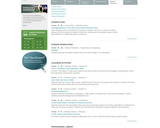
What is scary, and why does it fascinate us? How do writers and storytellers scare us? This lesson plan invites students to answer these questions by exploring their own scary stories and scary short stories and books. The lesson culminates in a Fright Fair, where students share scary projects that they have created, including posters, multimedia projects, and creative writing.
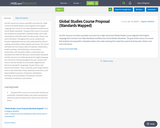
Use this resource to review a possible curriculum for a high school level Global Studies course aligned to the English-Language Arts Common Core State Standards and Wisconsin Social Studies Standards. The goal of this course is to ensure that students are purposeful, motivated readers who make meaning from what they read to be democratic citizens now and in the future. Throughout this course, students will become independent learners that understand the value of reading and writing in today’s global community. This course will foster the 21st Century skills of creativity, collaboration, problem solving, critical thinking, communication, productivity, and innovation within a context that uses standards from both the Wisconsin Social Studies Standards and the Common Core State Standards for English-language Arts (CCSS ELA). Moving throughout the year, students will focus on the five strands of social studies aligned by the Wisconsin Standards:
Geography: People, Places, and Environment
History: Time, Continuity, and Change
Political Science and Citizenship: Power, Authority, Governance, and Responsibility
Economics: Production, Distribution, Exchange, and Consumption
The Behavior Sciences: Individuals, Institutions, and Cultures

In Module 10.1, students engage with literature and nonfiction texts and explore how complex characters develop through their interactions with each other, and how these interactions develop central ideas such as parental and communal expectations, self-perception and performance, and competition and learning from mistakes.
Find the rest of the EngageNY ELA resources at https://archive.org/details/engageny-ela-archive .

In this module, students will read, discuss, and analyze contemporary and classic texts, focusing on how complex characters develop through interactions with one another and how authors structure text to accomplish that development. There will be a strong emphasis on reading closely and responding to text dependent questions, annotating text, and developing academic vocabulary in context.
Find the rest of the EngageNY ELA resources at https://archive.org/details/engageny-ela-archive .

In this module, students engage with literature and nonfiction texts that develop central ideas of guilt, obsession, and madness, among others. Building on work with evidence-based analysis and debate in Module 1, students will produce evidence-based claims to analyze the development of central ideas and text structure. Students will develop and strengthen their writing by revising and editing, and refine their speaking and listening skills through discussion-based assessments.
Find the rest of the EngageNY ELA resources at https://archive.org/details/engageny-ela-archive .

In Module 9.3, students engage in an inquiry-based, iterative process for research. Building on work with evidence-based analysis in Modules 9.1 and 9.2, students explore topics of interest, gather research, and generate an evidence-based perspective to ultimately write an informative/explanatory research paper that synthesizes and articulates their findings. Students use textual analysis to surface potential topics for research, and develop and strengthen their writing by revising and editing.
Find the rest of the EngageNY ELA resources at https://archive.org/details/engageny-ela-archive .
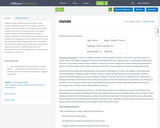
Students further develop close reading skills as they
examine Shakespeare’s Hamlet. The
tragedy of Hamlet develops many
central ideas, including revenge, mortality, madness, and the tension between
action and inaction. Students analyze the play through the close study of
Hamlet’s soliloquies and other key scenes to determine how Shakespeare’s
language and choices about how to structure the play impact character
development and central ideas. The showing of a filmed version of the play in
select lessons supplements students’ understanding of plot and background
points and encourages them to consider actors’ interpretations of the text.
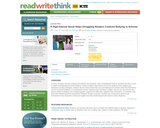
Students read a work of realistic fiction about bullying and gain understanding through writing, Readers Theatre, and discussion.
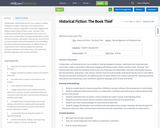
Collaborative, self-directed learners use a variety of reading strategies to analyze, understand, and create personal enrichment, inquiry, and problem solve when engaging with Markus Zusak's historical fiction novel, The Book Thief. Students will learn about the backdrop of the novel in the Holocaust era of World War II through multi-faceted activities like documentaries, web quests, news articles, and first-hand accounts to better understand how the set of a novel affects the plot and character development. An additional layer of inquiry derives from a literary perspective: exploring character motivations and relationships, color symbolism, figurative language, point-of-view, and theme.

Collaborative, self-directed learners use a variety of reading strategies to analyze, understand, and create personal enrichment, inquiry, and problem solve when engaging with Markus Zusak's historical fiction novel, The Book Thief. Students will learn about the backdrop of the novel in the Holocaust era of World War II through multi-faceted activities like documentaries, web quests, news articles, and first-hand accounts to better understand how the set of a novel affects the plot and character development. An additional layer of inquiry derives from a literary perspective: exploring character motivations and relationships, color symbolism, figurative language, point-of-view, and theme.
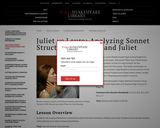
This is an activity exploring Shakespeare's use of sonnets in Romeo and Juliet. It explicitly explores the sonnet between Romeo and Juliet in the scene where they meet each other. Students will explore the structure of a Petrarchan sonnet and analyze whether the sonnet in Act 1 fulfills the requirements of the Petrarchan sonnet. This would be a part of a larger Romeo and Juliet unit.
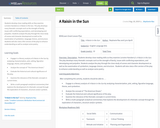
Students develop close reading skills as they examine Lorraine Hansberry's A Raisin in the Sun. The play develops many thematic concepts such as the strength of family, issues with conflicting expectations, and stereotyping and prejudice. Students analyze the play through the close study of scenes and character development as well as the examination of symbolism, language choices, and structure. Students will also view a film version of the play to enhance understanding as well as analyze some poetry.
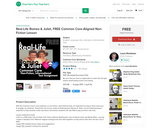
William Shakespeare's Romeo and Juliet is a rich text full of difficult language and complex themes. It is still a common text for high school students to read because of the connections to real life. Through this activity, students will be reading informational texts, watching video clips, and discussing how the theme of forbidden love is prominent in the 21st century. Students will become familiar with a Romeo and Juliet story from the 1990s, but also make connections to life today. This resource is available for free on Teacherspayteachers.com with registration.

Having explored how Robert Hayden uses consonance, assonance, and alliteration to illustrate a complex relationship between a father and a son in "Those Winter Sundays," students engage in a variety of vocal activities and performance techniques based on word sounds. Students then prepare a recitation of the poem for small group performances and compare their interpretative choices as part of the reflection process.
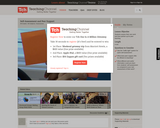
A teacher uses self-assessment as a formative practice within the classroom. Students self-assess their writing with a stop light system: green (confident with first draft), yellow (unsure and wants clarification), or red (needs support) based on a writing exemplar. Next, they partner with a student with an opposite color to provide feedback or obtain feedback. Finally students use the feedback to revise their writing.
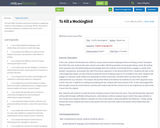
This unit offers formative assessment activities on gathering evidence, close reading, summarizing, themes, the author's craft and vocabulary in context for the novel To Kill a Mockingbird.